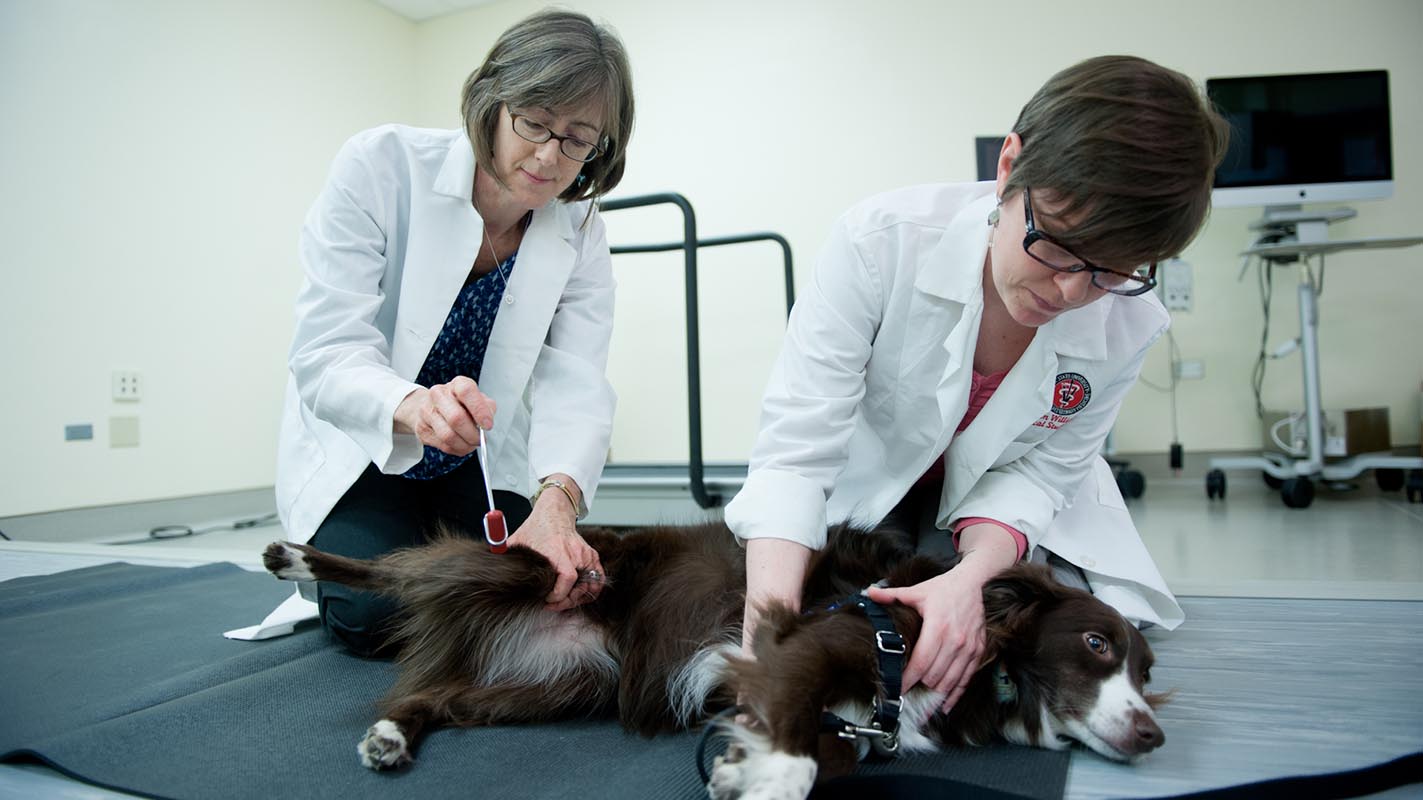Electromagnetic Field Therapy for Dogs With Spinal Injuries

Spinal surgery can involve a painful recovery process – whether you’re a human or a dog. But what if a noninvasive treatment utilizing a pulsed electromagnetic field (PEMF) could improve pain, reduce inflammation and possibly aid motor recovery? A recent small clinical trial at NC State’s College of Veterinary Medicine set out to see whether this was the case – and some of the results were promising.
Acute intervertebral disc extrusion (IVDE) in dogs occurs when there is an explosive release of disc material from the spinal column. In IVDE the “jelly-like” center of the disc cannot withstand pressures exerted on it by movements of the spine, so it ejects into the spinal canal above it. The disc material both bruises and compresses the spinal cord, rendering the dog unable to walk or feel anything below the injury site. It’s most often seen in short-legged breeds like Dachshunds, but can occur in other breeds as well.
Surgical decompression is the preferred treatment for IVDE – surgeons drill a hole in the bone above the spinal cord and remove the disc material. This procedure alleviates the compression, but doesn’t help with any bruising of the spinal cord. Afterward the dog’s ability to recover depends largely on the amount of injury incurred. For dogs with the most severe grade of injury the recovery rate is just over 50 percent – the rest remain paralyzed.
“The treatment for IVDE has remained pretty static for the last few decades, but recently there’s been a renewed effort to improve the outcomes for these dogs,” says Natasha Olby, the Dr. Kady M. Gjessing and Rahna M. Davidson Distinguished Chair in Gerontology. Olby, who specializes in neurology, recently conducted a small clinical trial of a loop that delivers PEMF over the surgical injury sites for 16 dogs with severe IVDE.
“These dogs all had sensorimotor complete injury, meaning they cannot move or feel their back legs,” says Olby. “We wanted to test the effects of the therapy to see if there was any improvement in pain reduction, wound healing or motor recovery.”
PEMF therapy isn’t new – it’s been shown to improve wound healing in human patients recovering from breast reconstruction surgeries. There is evidence that the field triggers pathways that reduce inflammation and improve growth factor levels and blood flow.
Sixteen dogs participated in the trial, separated into either a placebo or treatment group. Assisi Animal Health, a company that manufactures PEMF therapy loops, provided 16 randomized devices for use in the trial. After surgery the dogs were placed in jackets with incorporated loops that were programmed to deliver therapy every two hours for two weeks. Once at home, owners were instructed when to switch the loops on and off for another four weeks.
Olby and her team collected data on the dogs’ pain levels in a number of different ways, including via an algometer, which measures pressure applied. The dogs with the active loops demonstrated a 30 percent higher threshold for pressure after six weeks than the control group.
While both groups had equal numbers of dogs that remained paralyzed after surgery – which was in line with the 50 percent recovery rate – the group that received treatment had better knowledge of foot placement and lower markers of injury in their blood than the control group, suggesting that there may be a beneficial effect on the recovery from the spinal cord injury.
While these findings were promising, Olby cautions that there is more work to be done. “This was a small, pilot trial with very few dogs participating. While we can say that we saw pain reduction along the incisions for these animals, we would have to do a larger trial before concluding that the PEMF therapy enhances neurologic recovery following spinal-cord injury.”
- Categories:


